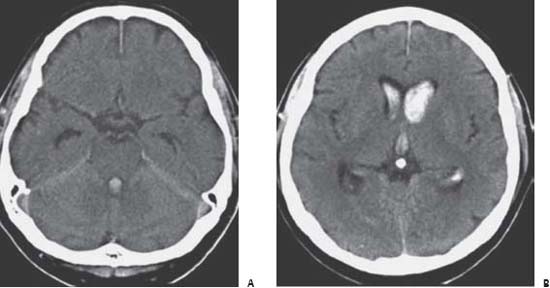Case 38 Intraventricular Hemorrhage Hosam Al-Jehani, Denis J. Sirhan, and Abdulrahman J. Sabbagh Fig. 38.1 Computed tomography scan without contrast at the level of (A) the 4 th ventricle and (B) foramen of Monro revealing extensive intraventricular hemorrhage with mild ventricular dilatation.

 Clinical Presentation
Clinical Presentation
 Questions
Questions
 Answers
Answers
38 Intraventricular Hemorrhage
Case 38 Intraventricular Hemorrhage Fig. 38.1 Computed tomography scan without contrast at the level of (A) the 4 th ventricle and (B) foramen of Monro revealing extensive intraventricular hemorrhage with mild ventricular dilatation.

 Clinical Presentation
Clinical Presentation
 Questions
Questions
 Answers
Answers
< div class='tao-gold-member'>
Only gold members can continue reading. Log In or Register to continue
Stay updated, free articles. Join our Telegram channel

Full access? Get Clinical Tree


